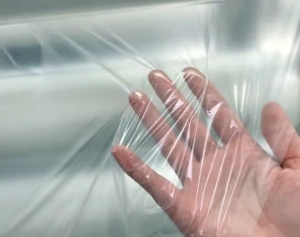Pyrolysis technology has emerged as a groundbreaking solution for waste management and energy recovery, offering a sustainable alternative to traditional methods. With advancements in design and efficiency, modern pyrolysis machines not only contribute to reducing environmental pollution but also enable the conversion of waste into valuable resources such as fuel and biochar. This document explores the latest eco-friendly innovations in pyrolysis machines, highlighting their features, benefits, and impact on building a greener future.
Table of contents:
How Pyrolysis of Solid Waste Reduces Harmful Environmental Impact
The Shift Towards Energy-Efficient Pyrolysis Technologies
Sustainable Practices Enabled by Modern Pyrolysis Equipment
Exploring Green Technology Trends in Pyrolysis Machine Development
How Pyrolysis of Solid Waste Reduces Harmful Environmental Impact
The pyrolysis of solid waste has proven to be one of the most eco-friendly methods to reduce the harmful effects of waste on the environment. Unlike traditional incineration, which generates significant amounts of toxic pollutants such as carbon dioxide and other harmful gases, pyrolysis minimizes these emissions. For instance, flue gas treatment modules in modern pyrolysis machines purify the gases discharged during the process, ensuring they meet environmental safety standards before being released into the atmosphere. Additionally, the pyrolysis process enables the conversion of waste, such as plastic, tires, and municipal sludge, into reusable resources like pyrolytic oil and carbon black. By keeping these materials out of landfills, where they would otherwise sit for centuries, pyrolysis technology helps curb pollution and contributes to a circular economy. Advanced technologies like non-condensable gas purification ensure that even the gases produced during pyrolysis can be reused as fuel, thereby reducing the total energy footprint of the process.
The Shift Towards Energy-Efficient Pyrolysis Technologies
Energy efficiency is a critical element of any industrial process today, and pyrolysis technologies have made remarkable strides in this arena. Modern pyrolysis machines for sale, such as those detailed on RDF Pyrolysis Equipment, emphasize continuous feeding systems and intelligent control mechanisms that streamline the energy consumption of the entire process. For instance, proprietary step thermal strengthening technology ensures uniform heating that minimizes energy waste while maximizing output. Furthermore, the non-condensable gas generated during the pyrolysis process can be purified and repurposed as a heating fuel for the furnace, significantly reducing the reliance on external energy sources. Compared to older technologies or incineration, these innovations allow enterprises to lower operating costs and carbon emissions simultaneously. This energy-conscious approach aligns with global efforts to adopt greener alternatives and makes pyrolysis attractive both environmentally and economically.
Sustainable Practices Enabled by Modern Pyrolysis Equipment
Modern pyrolysis equipment has introduced a range of sustainable practices that extend beyond reducing emissions. Key components such as the oil receiving module and flue gas treatment systems optimize the recovery and purification of materials, ensuring minimal waste at every stage of operation. For example, pyrolytic oils and other byproducts separated by oil condensing systems can be reused in industrial applications, cutting down the need to produce new resources. Additionally, state-of-the-art control systems based on PLC/DCS technology allow for real-time adjustments, which enhance the safety and efficiency of the pyrolysis process. Another noteworthy advancement is the compact design of today's pyrolysis machines, which require smaller operating spaces and thereby reduce land usage. These machines also support decentralized waste management, meaning municipalities and businesses can handle waste directly on-site with minimal disruption. Investments in pyrolysis technology often pay off within a short timeframe because of its dual role in waste disposal and resource generation, making it not just an environmentally responsible choice but also a sound financial decision for businesses.
Exploring Green Technology Trends in Pyrolysis Machine Development
The development of pyrolysis machines has taken a leap forward, integrating cutting-edge green technologies that address both environmental and operational challenges. For instance, innovations in pretreatment systems ensure that raw materials such as solid waste are processed to optimum quality before undergoing pyrolysis. These advancements improve both the speed and the effectiveness of material decomposition. Other notable trends include the use of waste-to-energy techniques to maximize resource output. By channeling purified gases back into the system for fuel, pyrolysis machines have reduced external fuel consumption significantly. The integration of advanced materials, such as corrosion-resistant alloys, enhances the longevity of these machines, further minimizing waste from equipment recycling or replacement. Additionally, modular designs, as seen in products like RDF pyrolysis machines, offer flexibility and scalability, catering to businesses of varying sizes. The future of pyrolysis technology looks increasingly promising, with research focusing on further reducing energy consumption and expanding the range of materials that can be processed efficiently, making pyrolysis machines an essential part of sustainable development strategies worldwide.

No comments:
Post a Comment